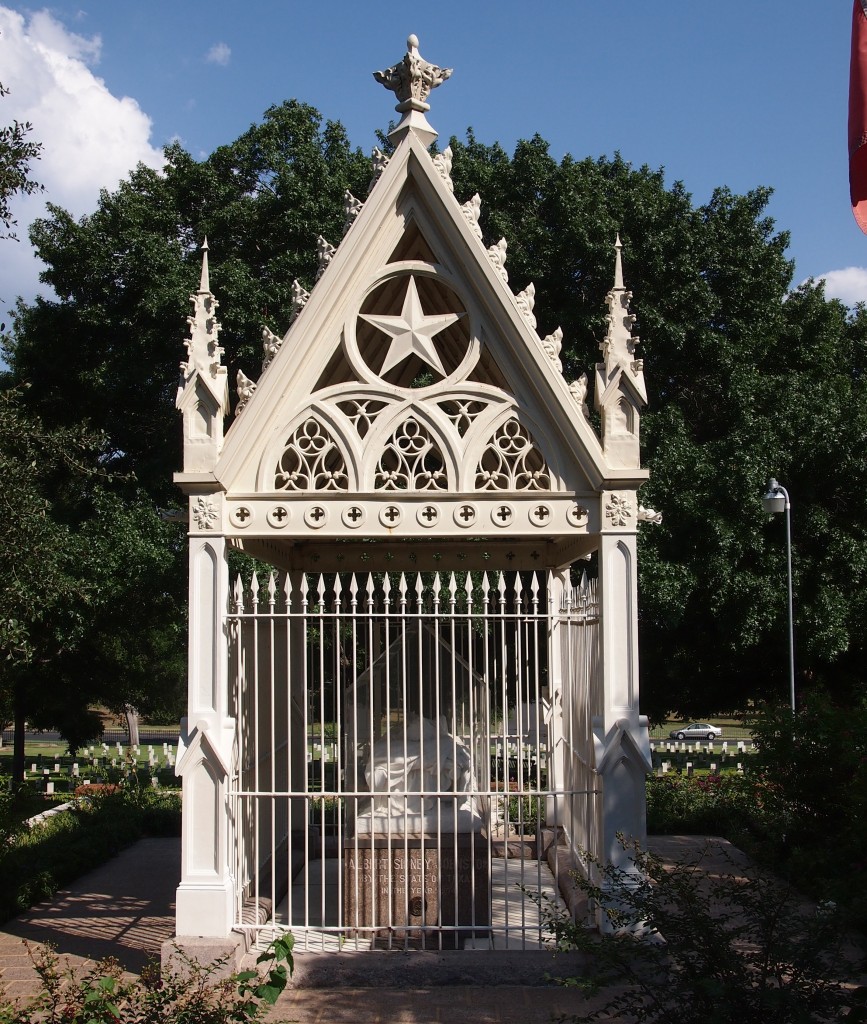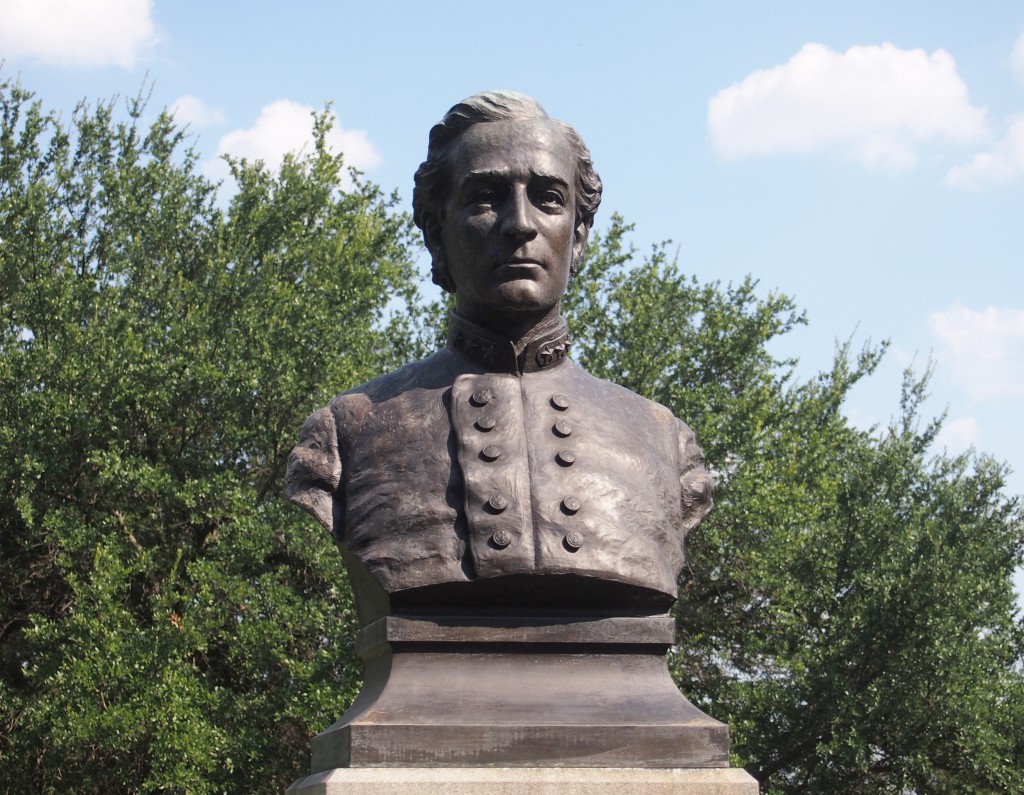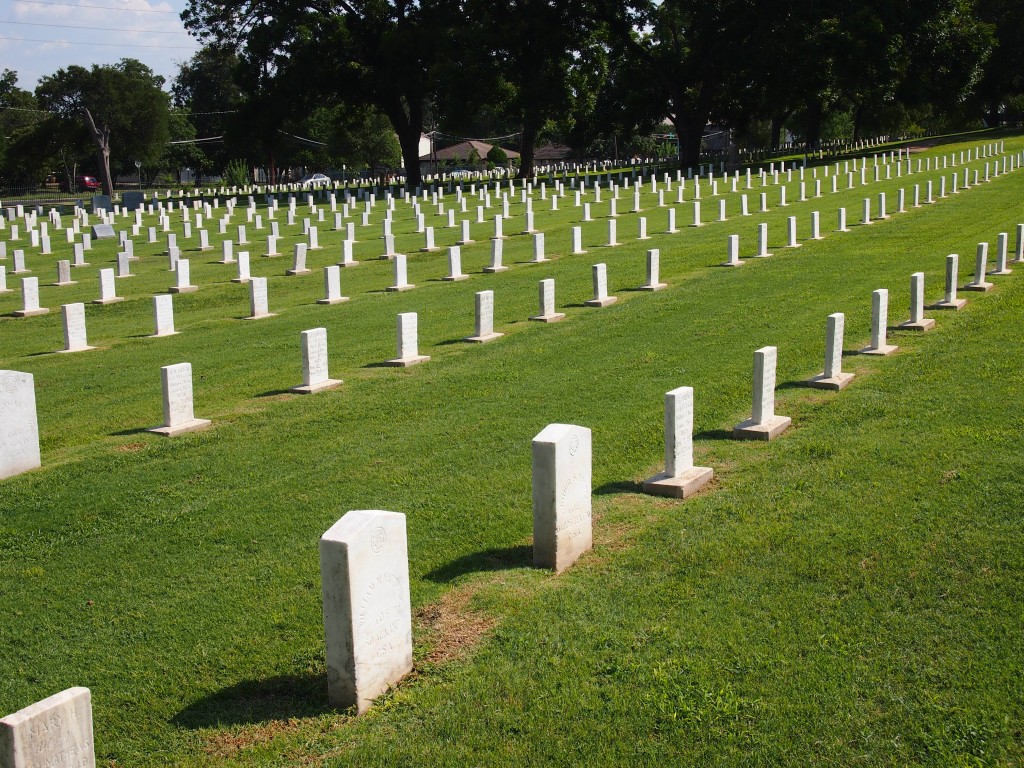Another major section of the Texas State Cemetery honors Confederate dead. Even before we went, I knew that Gen. Albert Sidney Johnston, who took a slug at Shiloh, had been reburied at the cemetery. Sure enough, he has one of the larger memorials, at a place of honor among the field of Confederates.
The memorial, including a recumbent statue of Gen. Johnston, was done by Elisabet Ney, another European sculptor who did well in 19th-century Texas, though she was no slacker before she left Europe. “Among her best-known works from this period [i.e., pre-Texas] are portrait busts of Arthur Schopenhauer, Giuseppi Garibaldi, and Otto von Bismarck, and a full-length statue of King Ludwig II of Bavaria,” notes the Handbook of Texas. After establishing herself in Texas, she did busts of Stephen F. Austin and Sam Houston (presumably not from life), among others. All in all, quite a career.
These days her Austin studio is a museum. How did I not know about it? Got another thing to see in Austin someday.
The light was poor on the recumbent Gen. Johnston, so I didn’t make an image. Not far away, however, is a much more obscure Confederate general, John A. Wharton. He was in full sunlight.
Another Confederate Texan, his date of death is listed as April 6, 1865, so I figured he was one of the unlucky few killed in action just as the war ground to an end. But no. Again from the Handbook of Texas: “On April 6, 1865, while visiting Gen. John B. Magruder’s headquarters at the Fannin Hotel in Houston, Wharton was killed by fellow officer George W. Baylor in a personal quarrel that grew out of ‘an unpleasant misunderstanding over military matters.’ Even though Wharton was found to have been unarmed, Baylor was acquitted of murder charges in 1868.” Geez.
The bust was by Enrico Filiberto Cerracchio, another European sculptor who ended up in Texas. Who knew there were so many? He came a little later, though, and is best known for his large bronze equestrian figure of Sam Houston at the entrance to Hermann Park in Houston, which dates from 1924.
Generals are one thing, but far more of the cemetery is occupied by ordinary Confederate soldiers, or more exactly, old men who had once been CSA who died in the late 19th and early 20th centuries. Confederate Field is large.


